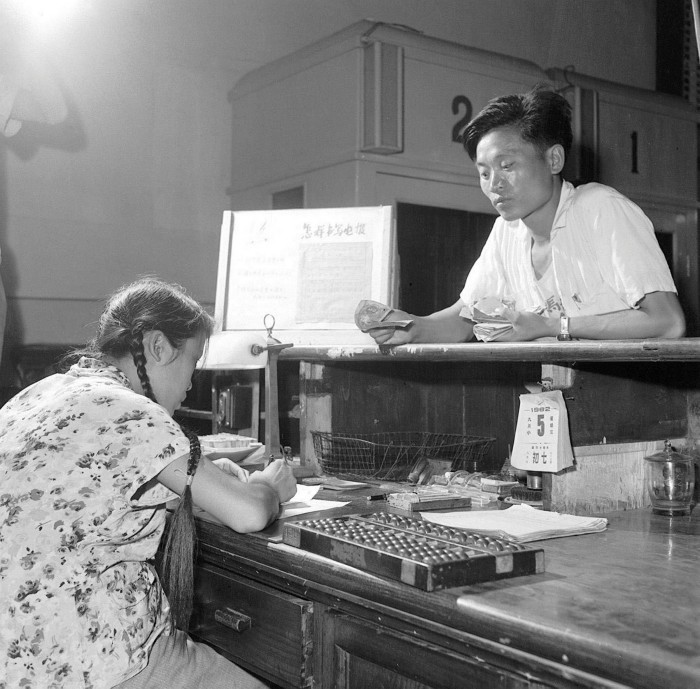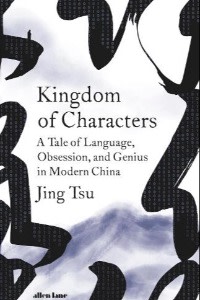Kingdom of Characters — when China got lost in transliteration

Roula Khalaf, Editor of the FT, selects her favourite stories in this weekly newsletter.
At one point in Kingdom of Characters, the reader becomes poignantly aware of the forbidding challenges that China — saddled with its 5,000-year-old ideographic script — faced as it tried to integrate itself into a world dominated by the Roman alphabet.
In the late 19th century, a language reformer named Wang Zhao wrote a 106-character parable about a certain gentleman who had a wildlife fetish and mistakenly tried to eat ten lions carved from stone.
Read in its original characters, the parable would have made sense to literate Chinese readers. But transliterated into Roman script, it read like this:
“Shi shi shi shi shi shi shi shi shi shi shi shi shi shi shi shi shi shi shi shi shi shi shi shi shi shi shi shi shi shi shi shi shi shi shi shi shi shi shi shi shi shi shi shi shi shi shi shi shi shi shi shi shi shi shi shi shi shi shi shi shi shi shi shi shi shi shi shi shi shi shi shi shi shi shi shi shi shi shi shi shi shi shi shi shi shi shi shi shi shi shi shi shi shi shi shi shi shi shi shi shi shi shi shi shi shi.”
The fact of this being gibberish was precisely the point. Because Chinese has so many characters that sound the same — and are differentiated to the listener only by their tone — Zhao was able to demonstrate the shortcomings of trying to render written Chinese in a Romanised alphabet.
This story is one of several nuggets set out in this fascinating new book by Yale professor Jing Tsu. While focusing on the Chinese script, the book ultimately tells a story of much broader importance and furnishes the reader with a sense of the obstacles that China had to overcome to “join” the modern world.
Such obstacles were by no means merely technical or procedural. They went to the very essence of what it has meant, and still means, to be Chinese. Time and again, the country came close to losing its written language but was saved by the work of some extraordinary figures, some of whom Tsu brings vividly to life.
The age of the telegraph in the late 19th century seemed to pit the modernity of the west against Chinese culture — with the latter coming off worst. The Morse code, with its system of dots and dashes, was used to transmit telegrams written in the Roman alphabet.

But with so many homophones, it was impossible to use letters to spell out Chinese characters. So a system of assigning a unique set of four to six numbers to each character was adopted. The recipient of a telegram would then match the number to the correct character in a codebook to decipher a message.
Such a system was both laborious and expensive. Chinese characters in a telegram of 25 words required at least 30 minutes to decipher, whereas a comparable message in English took only about two minutes. All this put China at a disadvantage as globalisation dawned.
“Imagine the time and lives sacrificed when a military command cannot be relayed quickly,” Tsu writes. “Or the profits lost when competitors have the means to make bids more quickly.”
In the end, of course, the march of technology — and especially the computer age — has helped liberate China from such indignities. The cultural despondency that marked much of the past 200 years has given way to a deep-rooted faith in Sinicisation today.
China has kept its ancient script and arrived at the forefront of technology. In coming decades, Chinese characters may be felt less as a barrier to modernising Chinese seeking to integrate with the west and more as an obstacle for non-Chinese trying to get to grips with the technologies of the future. Chinese technologies, that is.
Kingdom of Characters: A Tale of Language, Obsession and Genius in Modern China by Jing Tsu, Allen Lane £20, 336 pages
James Kynge is the FT’s global China editor
Listen here to how that ‘shi shi shi’ parable sounds in Chinese: —
Letter in response to this article:
China’s I Ching was really prototype computer code / From Patrick Dransfield, Kowloon, Hong Kong
Comments